|
In contrast, over 75% of the population lives in rural areas, where life is centred on subsistence agriculture, and this farming is basic with tools often made by hand and fields ploughed by zebu, an ox-like creature. The cultivation of rice, the absolute staple of the national diet, is not just a job but a way of life, with entire families participating in the planting and harvesting cycles. Daily life in Madagascar is guided by a complex system of local and ancestral taboos known as fady. These unwritten rules govern everything from what foods can be eaten to which days are auspicious for starting a project. A fady might forbid pointing at a tomb, wearing the colour red in a certain village, or working in the fields on a Tuesday. While they may seem like simple superstitions to an outsider, fady are integral to social harmony in Madagacar and show respect for the land and ancestors. They vary dramatically from one region, village, or even family to the next, adding another layer to the island's cultural heritage and diversity.
Religion and traditional beliefs coexist in a unique spiritual blend in Madagascar. While the majority of the population identifies as Christian (either Protestant or Catholic), these beliefs are intricately interwoven with traditional practices, most notably the veneration of ancestors (Razana). Indeed, one of the most significant and unique cultural events is the funerary tradition of the Famadihana, or "The Turning of the Bones" (right.) Far from a sombre occasion, this ceremony is a joyful celebration of life and family lineage and an occasion of family reunion, meant to honour the Razana and maintain the link between generations. Held between June and September, families from the central highlands gather to exhume the remains of their loved ones from the family tomb. They carefully re-wrap the bodies in fresh silk shrouds, then carry them aloft while dancing to live music before returning them to rest. This Famadihana is a powerful and festive expression of the Malagasy belief that ancestors are not gone, but remain active mediators between the living and the divine (Zanahary) and this tradition is a time for feasting, storytelling, and reinforcing family lineage and community ties, demonstrating that for the Malagasy, the past is ever-present in daily life. |
Life in Madagascar |
Life in Madagascar |
Life in Madagascar | Life in Madagascar |
 |
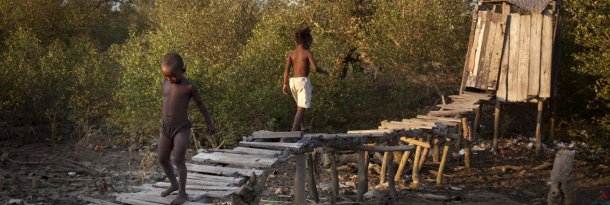
|
Marking the traditional New Year, Alahamady Be is another cornerstone of Malagasy culture. Tied to the lunar calendar, this festival is a time of renewal and purification. Festivities often involve specific rituals, such as the donning of new clothes and extensive house cleaning to wash away the impurities of the past year. Families gather for enormous feasts, share traditional greetings, and honour the elderly, making it a celebration deeply rooted in community and fresh beginnings. On the more modern end of the spectrum is the Donia Festival, a week-long music and cultural carnival held on the island of Nosy Be. This event showcases a vibrant mosaic of sounds and styles, attracting artists and spectators from across the Indian Ocean. The streets erupt with parades, traditional dance performances, sporting events, and concerts that last late into the night. Donia demonstrates the dynamic, evolving nature of Malagasy culture, celebrating both local heritage and its connections to the wider world.
Food and diet are central to life in Madagascar with a singular focus on rice (vary). It is often said that a Malagasy person has not truly eaten a meal unless it includes a heaping portion of rice. This is typically accompanied by a side dish known as laoka, which can be anything from zebu (a type of humped cattle) stew and chicken to beans, leafy greens, or fish, depending on the region and a family's economic means. Meals are a communal affair, reinforcing family and community bonds. However, this reliance on agriculture also leaves the population vulnerable. In the arid south, recurring droughts have led to severe food insecurity and malnutrition, posing one of the nation's most urgent challenges. This precariousness extends to many other aspects of life. Access to modern healthcare is extremely limited, particularly outside of major cities. Rural clinics are often understaffed, lack basic medicines, and may be a day's walk away for many villagers. Consequently, traditional healers and herbal remedies still play a vital role in community health. Similarly, sanitation infrastructure is severely underdeveloped causing health risks. Access to clean drinking water and proper toilet facilities is a daily struggle for a majority of the population, leading to a high prevalence of waterborne diseases, in a country where diarrhoeal disease is among the highest causes of morbidity and mortality particularly amongst the young. In fact, in rural Madagascar, only about 45-57% of the population had access to basic sanitation in 2020-2022 (latest figures available), while 36% lacked basic hygiene, leading to continued widespread open defecation. Rural electricity access in Madagascar is also limited and estimated to reach 5% of theat population, with a national electrification rate of approximately 36% as of 2025. Madagascar is working to increase this access, particularly in rural areas, by deploying off-grid and renewable energy solutions, such as mini-grids and standalone solar systems, with the government aiming for a 70% national electricity access rate by 2030. Life opportunities, especially for the youth, are constrained by these economic realities. While education is seen as the primary pathway to a better future, many children are forced to drop out of school to help with farm work or to earn a small income for their family. For those who do complete their education, formal employment is scarce, leading to high rates of underemployment. Despite these obstacles, the Malagasy people are incredibly resourceful. The informal economy thrives on ingenuity, from mechanics who can fix anything with limited tools to artisans who craft beautiful goods from recycled materials. The above video provides further insights into daily life in Madagascar. |
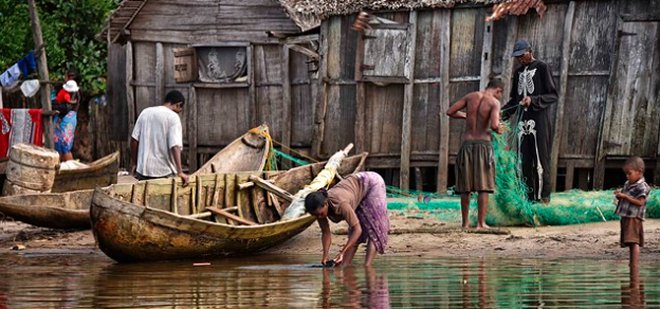
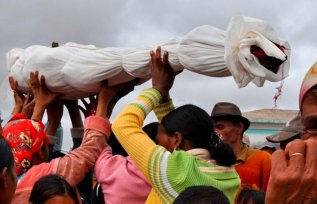 And this culture in Madagascar reflects the origins of its history. Unlike its African neighbours, the island was first settled by Austronesian peoples who sailed across the Indian Ocean from Borneo nearly 2,000 years ago. Later, Bantu migrants from mainland Africa arrived, blending with the existing population. This dual heritage is the cornerstone of Malagasy identity. You can hear it in the language, Malagasy, which is part of the Malayo-Polynesian family, sharing roots with languages in Malaysia, Indonesia, and the Philippines.
And this culture in Madagascar reflects the origins of its history. Unlike its African neighbours, the island was first settled by Austronesian peoples who sailed across the Indian Ocean from Borneo nearly 2,000 years ago. Later, Bantu migrants from mainland Africa arrived, blending with the existing population. This dual heritage is the cornerstone of Malagasy identity. You can hear it in the language, Malagasy, which is part of the Malayo-Polynesian family, sharing roots with languages in Malaysia, Indonesia, and the Philippines.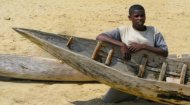


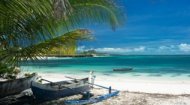
 In Madagascar the structure of the family home starkly reflects an urban-rural divide. In the central highlands, traditional rural homes, known as trano gasy, are often tall, narrow houses built from brick, clay, and mud, with thatched roofs. In coastal regions, homes are more commonly constructed from wood, bamboo, and woven palm fronds, designed to stay cool in the tropical heat. In cities, the architecture is more varied, ranging from concrete apartment blocks and modern houses for the affluent to crowded, informal settlements on the city's periphery. Regardless of the location, the family unit is the cornerstone of society. Multi-generational households are common, and a deep-seated respect for elders guides social interactions. This is underpinned by the cultural philosophy of fihavanana, a concept of kinship, solidarity, and mutual support that binds communities together.
In Madagascar the structure of the family home starkly reflects an urban-rural divide. In the central highlands, traditional rural homes, known as trano gasy, are often tall, narrow houses built from brick, clay, and mud, with thatched roofs. In coastal regions, homes are more commonly constructed from wood, bamboo, and woven palm fronds, designed to stay cool in the tropical heat. In cities, the architecture is more varied, ranging from concrete apartment blocks and modern houses for the affluent to crowded, informal settlements on the city's periphery. Regardless of the location, the family unit is the cornerstone of society. Multi-generational households are common, and a deep-seated respect for elders guides social interactions. This is underpinned by the cultural philosophy of fihavanana, a concept of kinship, solidarity, and mutual support that binds communities together.


